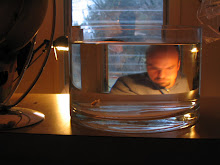Wednesday, March 20, 2013
Masterworks in calligraphy!
The composer Richard Wagner is known, of course, for many things - but his writings make it clear that he wanted to be known especially for the neatness of his scores and handwriting. As Henry Finck observed, in his 1907 book Wagner and his Works, "never were there such neat-looking orchestral scores as Wagner's," and Wagner's pride in his penmanship manifests itself in a letter he wrote to Franz Liszt:
"You need not get me a copyist. Mme Wesendonck has made me a present of a gold pen - everlasting - which has made a calligraphic pedant of me again. These scores will be my most finished masterworks in calligraphy! One cannot escape one's fate!"
Indeed. When it comes to neatness, we are guided by larger logics. And, much as Wagner claimed that he was destined to write neat scores just as long as he lived, Cleo seems also fated to produce - if rather less self-consciously than Wagner, for the moment - tidy little compositions of her own. When she sits down to play, she often places her two shoes next to one another in a lovely little pair on the edge of a rug, or against a wall. Sure, she sometimes leaves blocks in a crumbling pile, or puzzles unfinished, but more commonly her wake consists as well of books stacked in stable columns, or plastic jewelry thoughtfully set back into boxes. Want proof? I'll simply point to the picture above, which documents the residue of twenty minutes of play at the Towson Public Library. After ransacking the toy kitchen and preparing a pretend feast, Cleo offhandedly arranged some of the plastic foods in the pattern above: an expanding, fanning series of curves that contain basic coloristic alternations, and that reminded me, distantly, of the punctilious autographs of a composer from a much earlier composer.
Subscribe to:
Post Comments (Atom)





No comments:
Post a Comment